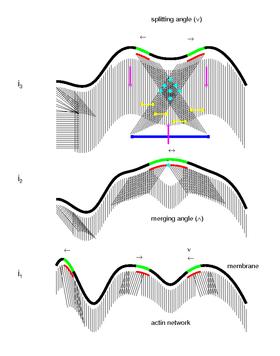Amoeboid movement facts for kids
Amoeboid movement is the most common way that many tiny living things, called eukaryotic cells, move around. Think of it like a cell crawling! It happens when a cell pushes out parts of its squishy inside, called cytoplasm, to create "false feet." These false feet are also known as pseudopodia. The cell then slides its whole body into these false feet, pulling itself forward.
This special type of movement is seen in many different organisms. For example, amoebae (which are single-celled organisms) and slime molds use it. Some other tiny creatures called protozoans, like Naegleria gruberi, also move this way. Even some cells inside your own body, such as white blood cells, use amoeboid movement to get where they need to go, like fighting off germs.
Scientists are still working to fully understand how this movement works. However, they know it involves tiny parts inside the cytoplasm called actin and myosin molecules. These molecules work together like tiny muscles to help the cell push and pull itself along.
Images for kids


